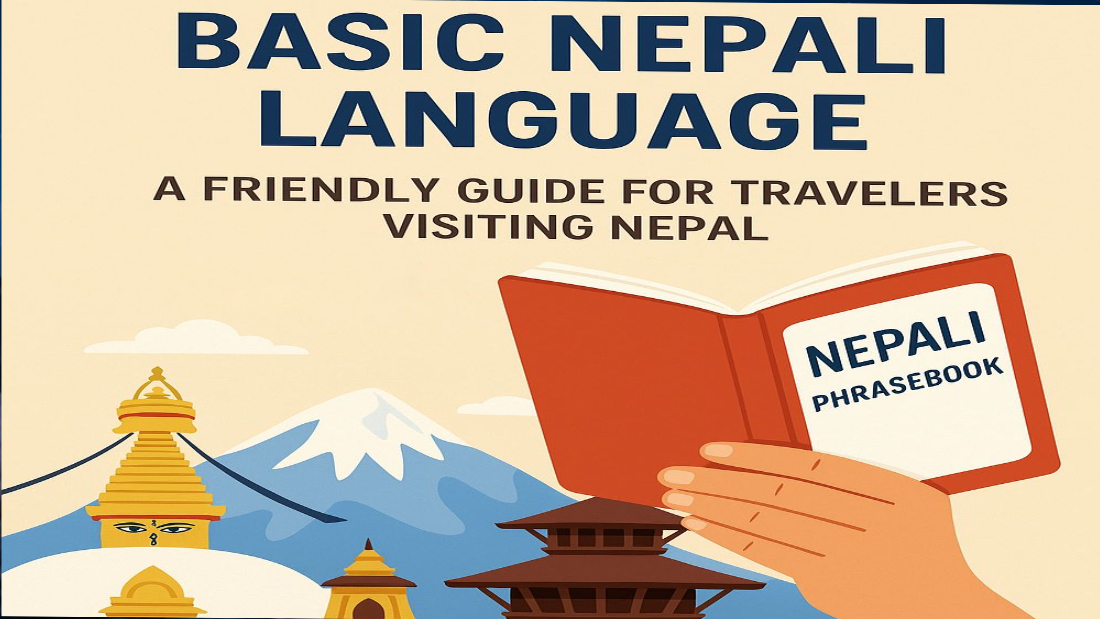
- 06 Jun, 2025

When traveling to a new country, understanding the local language—or at least knowing what to expect—can make your journey smoother, safer, and more enjoyable. Nepal, with its stunning Himalayas, rich culture, and warm-hearted people, is a multilingual country. While you don’t need to be fluent in Nepali to explore its beauty, knowing a few basics and understanding the language landscape can go a long way!
Here’s everything you need to know about languages in Nepal and how to communicate effectively as a tourist.
Nepal is home to over 120 indigenous languages and dialects spoken by different ethnic communities. However, the most commonly used languages across the country are:
Spoken by the majority of the population
Used in government, media, education, and daily communication
Devanagari script (like Hindi)
Similar to Hindi in structure and vocabulary
Commonly used in hotels, restaurants, airports, and trekking regions
Most people working in tourism—guides, porters, shopkeepers—have conversational English skills
Signs, menus, and travel info are often bilingual (English + Nepali)
Newari (Nepal Bhasa) – spoken in Kathmandu Valley
Maithili, Bhojpuri, Tharu – spoken in the southern Terai region
Tamang, Gurung, Sherpa, Rai, Limbu – spoken in hilly and Himalayan regions
These are often spoken within communities but may be heard during homestays or local cultural events
Even simple greetings and polite words can earn you smiles and better service:
| English | Nepali |
|---|---|
| Hello | Namaste (नमस्ते) |
| Thank you | Dhanyabad (धन्यवाद) |
| Yes / No | Ho / Hoina (हो / होइन) |
| How much? | Kati ho? (कति हो?) |
| Where is...? | ...kaha chha? (...कहाँ छ?) |
| I don’t understand | Maile bujhina (मैले बुझिनँ) |
Google Translate and apps like Nepali Dictionary or iTranslate work offline and can help bridge language gaps.
In trekking or remote areas, having a guide who speaks both English and the local dialect (like Sherpa or Tamang) can be essential for safety and richer cultural exchange.
When words fail, a smile, hand gesture, or drawing can often get the message across. Nepalese are generally friendly and willing to help.
| Location | Language Use |
|---|---|
| Kathmandu | English widely spoken in tourist zones (Thamel, Durbar Marg) |
| Pokhara | Most hotels, restaurants, and shops speak English |
| Chitwan / Lumbini | Basic English in tourism services |
| Trekking Routes (Everest, Annapurna) | Guides, porters, and teahouse owners speak basic to fluent English |
| Rural Villages | Nepali preferred, limited English – guide recommended |
While English will get you through most of Nepal’s tourist trail, learning a few Nepali words and understanding the linguistic diversity will deepen your cultural experience and make your journey more meaningful.
Nepal’s true beauty lies not just in its mountains, but in its people, culture, and conversations—even the broken ones. So say “Namaste” with a smile, and let the language of kindness lead the way.
Nord Extreme Himalaya (P) Ltd | © 2025 All Rights Reserved | Website Designed By: Thulo Inc Powered By: Thulo Sites
Comments (0)